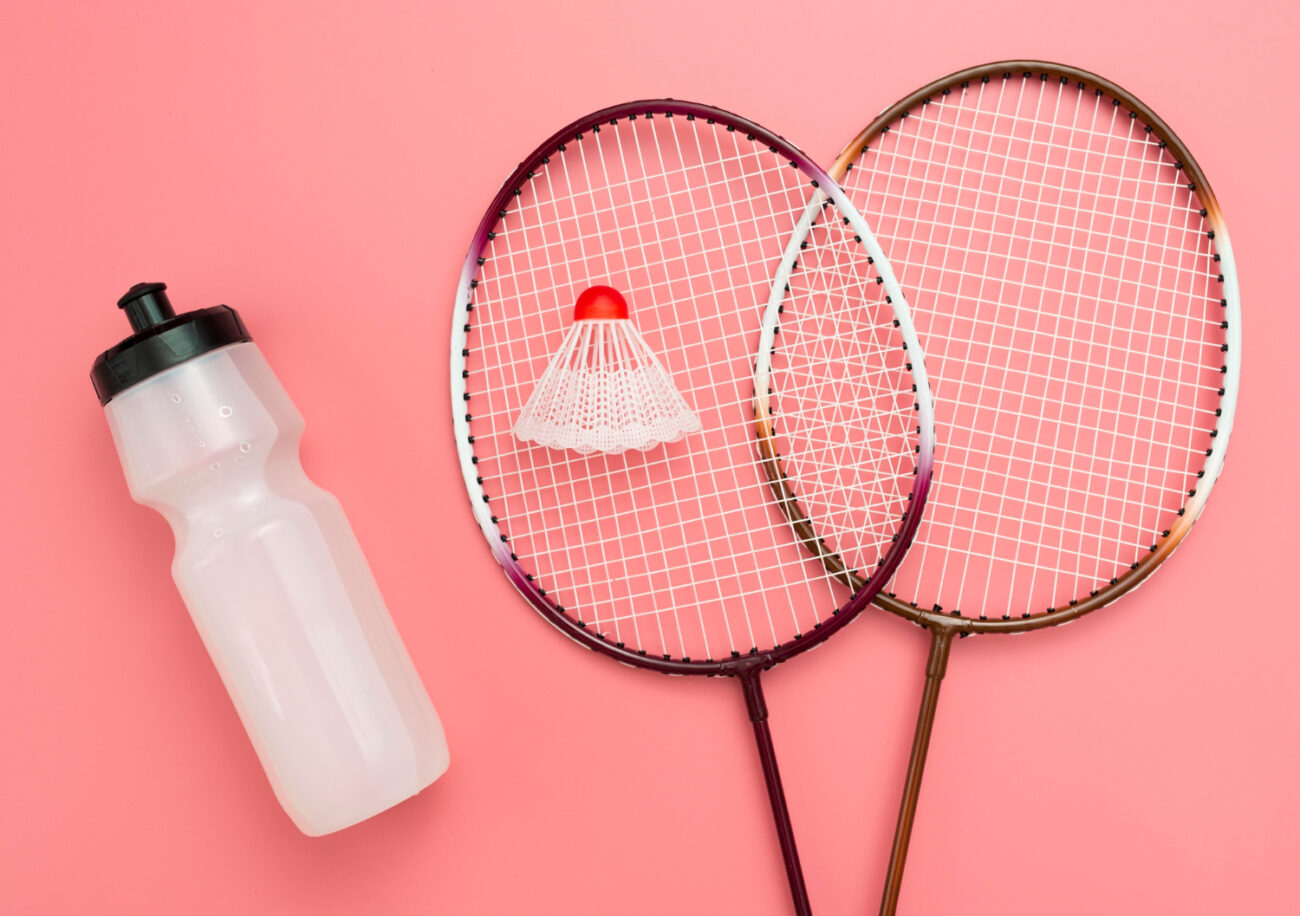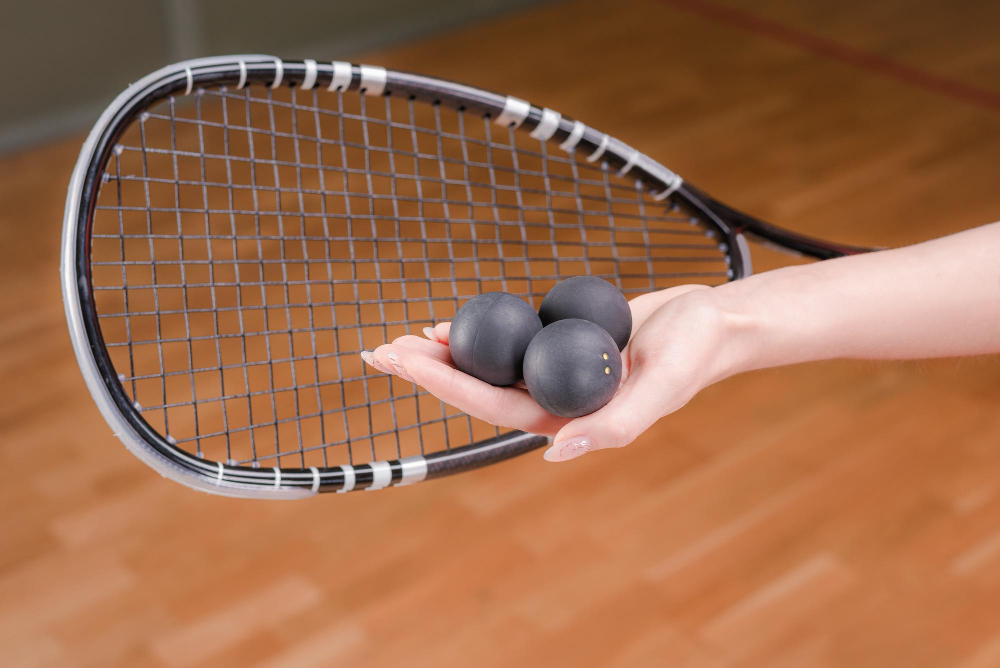The most crucial thing you can do to get better in badminton is to figure out how to choose a racket that fits your playing style and technique. Many significant factors lead to choosing one’s racket such as different types of badminton rackets, weight of badminton rackets, etc. To learn some significant factors while choosing your badminton racket, read our buyer’s guide below.
How should you select the best badminton racket for your playing style?
What is the ‘head-light’ or ‘head-heavy’ balance of badminton rackets?
The center of balance, which is located in the racket starting at the base of the handle, determines the racket’s weight distribution, also known as the “balance point.”
Head-heavy racket: These badminton racquets give your smashes extra force. With a high balance number, these racquets provide a heavier feel. For instance, badminton rackets from the Xenon and Voltric series.
Head-light Racket: For badminton players who prefer to play at the nets, these racquets are perfect. Compared to head-heavy racquets, these are lighter and easier to handle. For instance, the HEAD Falcon Badminton Racquet Series and the Yonex Nanoray.
Even-Balanced Racket: All-around players benefit greatly from even-balanced badminton rackets, which provide the best feel and flexibility. The racket’s weight is dispersed throughout the object. For instance, the Head Ignition series badminton racket and Yonex Arcsaber.
How should I select a racket on the basis of the weight of a racket?
Your playing style and level of expertise will determine the weight of your badminton racket. When the racket is strung or has additional grip, its weight and balance alter.
Lightweight Racket (less than 85 grams): Both novice and expert players will find these racquets excellent. We have a varied selection of lightweight badminton rackets, including the best-rated badminton rackets at God of Sports. These rackets have a quicker swing speed and are easier to manoeuvre on the court. For instance, the Yonex Arcsaber 73 Light Badminton Racket (73 gms) or the HEAD Airflow 3000 racket (73 gms).
Heavier Rackets (more than 86 gm): Rackets that weigh greater than 86 grams give the shuttle extra momentum and speed. Players who can handle hefty rackets for their power-packed game and have strong shoulders will find these badminton racquets ideal.
What should be the material composition of a badminton racket?
Certain entry-level badminton rackets are made of steel or aluminum and are reasonably priced for consumers on a tight budget. But it’s also a good idea to spend money on a carbon fiber or “graphite” racket, like the Yonex Carbonex 7000 or the HEAD Inferno 70 (Graphite Recreational Racquet).
With cutting-edge material innovations like Nanocarbon, all intermediate and expert rackets are either “Graphite composite” or “100% graphite.” Compared to rackets made of steel or aluminum, these are lighter, stronger, and more effective.
What should be the ideal badminton grip size?
First and foremost, it’s crucial to keep in mind that the racket grip size can be changed up or down based on the kind and quantity of grip you decide to use. These days, most badminton players in the UK, Europe, and Asia choose to use smaller grip sizes.
“G + Number” is used to assess grip sizes; the smaller the number, the larger the handle (I know, complicated!). For instance, Victor rackets are usually G5 in size, yet practically all Yonex rackets are G4 standard.
What is shaft stiffness in badminton rackets?
The flexibility that a racket provides is referred to as stiffness. To choose the stiffness of your badminton racquet, compare the features and specs on our website.
Stiff Shafts Rackets: Players with strong technique and a quick, forceful swing are best suited for stiff shafts.
Medium Stiff Rackets: Rackets of medium stiffness are best suited for players who have low arm speed and a developing technique.
Flexible Shaft Rackets: Beginners can benefit from flexible shafts that provide increased power and speed, as well as slow-arm speed players. These are simple to use.
Which String should I choose and at what tension?
Depending on your playing style and technique, you can play with different strings or with varied tensions to maximize the combination of power and control.
Synthetic multifilament strings are well-liked and long-lasting. These strings are the most often used ones available. Yonex BG65 String, for instance.
Professional athletes use natural gut, which is costly but gives them an incredible “feel.”
High Tension: Use high-tension badminton rackets if you are a heavy hitter and an advanced player. Rackets strung at high tension of 25 pounds or more can be obtained by players. The badminton racket will only make contact with the shuttle for a brief period of time under this increased tension, giving your shots more control and less force.
Reduced Tension: Your badminton racket should have less tension if you are a novice or intermediate player. Beginners should get their badminton rackets strung at low tension, ideally weighing between 8-9 kgs or 9-10 kgs. Badminton rackets provide more force in shots with this reduced tension.
Which badminton racket is good?
There are many various badminton rackets available on our website, God of Sports. However, it depends on one’s choice before selecting a badminton racket, based on the factors we have mentioned in this article. That said, Yonex rackets are usually the best-selling rackets in India and also overseas.
In addition, you can find many variants of Yonex badminton rackets on our website.




